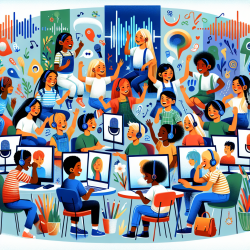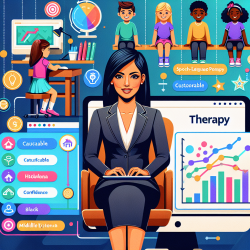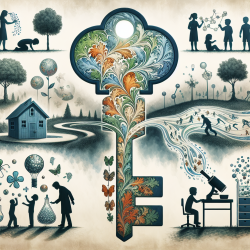Revolutionize Your Therapy Sessions: The Secret Music & Movement Intervention for Autism

Have you ever wondered how to make your therapy sessions more engaging and effective for children with Autism Spectrum Disorder (ASD)? Imagine combining music and movement to create a dynamic intervention that could revolutionize your approach. Intrigued? Let’s dive into the research behind Creatively Able, a music and movement intervention designed specifically for children with ASD.
Why Music and Movement?
Music and movement are not just fun activities; they offer profound benefits for children with ASD. According to a study published in the International Journal of Environmental Research and Public Health, combining these elements can significantly improve self-regulation and executive functions in children with autism.
Understanding Creatively Able
Creatively Able, developed by Broadway artist Andrew Palermo, is a unique program that uses music and movement to engage children with ASD. The intervention focuses on their strengths and interests, making it not only effective but also enjoyable for the participants.
Key Components of Creatively Able
- Music Selection: Carefully chosen music with an easy-to-follow rhythm to minimize distractions.
- Warm-Up Activities: Includes across-the-floor movements and mirroring exercises to foster social interaction.
- Creative Choreography: Children create and perform a story through music and movement, enhancing their executive functions and social skills.
Impact on ASD Symptoms
The pilot study involving 20 children with ASD showed promising results. Group-level reductions in stereotyped and compulsive behaviors were observed, with some children showing significant individual improvements. The intervention also promoted self-regulation and engagement, which are crucial for the development of executive functions.
How to Implement Creatively Able in Your Practice
- Start Small: Begin with short sessions and gradually increase the duration as children become more comfortable.
- Focus on Interests: Tailor the music and themes to the interests of the children to keep them engaged.
- Encourage Social Interaction: Use activities like mirroring to promote eye contact and joint attention.
Encouraging Further Research
While the initial results are promising, more research is needed to fully understand the long-term benefits of music and movement interventions for children with ASD. As practitioners, staying informed and contributing to ongoing research can help refine these interventions for better outcomes.To read the original research paper, please follow this link:
Beyond Broadway: Analysis of Qualitative Characteristics of and Individual Responses to Creatively Able, a Music and Movement Intervention for Children with Autism.
Citation: Lakes, K. D., Neville, R., Vazou, S., Schuck, S. E. B., Stavropoulos, K., Krishnan, K., Gonzalez, I., Guzman, K., Tavakoulnia, A., Stehli, A., & Palermo, A. (2019). Beyond Broadway: Analysis of Qualitative Characteristics of and Individual Responses to Creatively Able, a Music and Movement Intervention for Children with Autism. International Journal of Environmental Research and Public Health, 16(8), 1377. https://doi.org/10.3390/ijerph16081377










